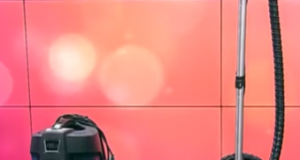Can you use any bags with vacuum sealers? The short answer is no. To know further information about this, we will recommend you to go through the article.
Vacuum sealing is now a widely practiced way to preserve food for a long lifespan. In this process, you put the food in a bag or container and then remove the air from it. As there is no air or atmosphere inside, the spoiling of the food reduces significantly. As a result, a lot of people now put the food in a vacuum bag before refrigerating it to keep it good for a long time.
While using the vacuum sealing technique to preserve food, you might be thinking about using any bad. But that is not going to be a good idea. In the below part of the article, we will let you know why you simply cannot use any bag for vacuum sealing. We will also recommend you the best bags for this. Keep going through the article.
Can You Use Any Bags with Vacuum Sealers?
As we mentioned earlier, you simply cannot utilize any bag for vacuum sealing the food to preserve it. That is because the oxygen transmittal rate of the bag varies on a large scale. It is the rate that discloses how much of the oxygen will pass through the bag when you seal it. When the rate is high, the bag will allow more air to pass through it even after you seal it. As a result, the rate of spoiling will be quicker.
Usually, the transparent polythene bag we see arrives with a high oxygen transmittal rate. You might see it shrinking while using it for vacuum sealing. But the vacuum will not last long as the air will enter through very quickly. As a result, they are not recommended for vacuum-sealing your food. You will require using the barrier bag that transmits oxygen at a low rate when they are sealed.
When it comes to the barrier bag, the oxygen transmission rate is around 10cc/100 when the rate of oxygen transmission in the polyethylene bag is around 450cc/100 at the same time. That means the usual polyethylene bag start getting oxygen in very quick order and they are not suitable.
Which Bag to Use for Vacuum Sealers?
There are certain types of bags that perform better while vacuum-sealing food. Below, we will let you know about some variations. As per our research, the coextruded poly bags including the Nylon Woven Bags, EVOH Bags, Foil bags, or PET bags are the best suit for this. You will find detailed information about these bags. Amongst them, nylon woven bags are highly used for both edible and non-edible products around the globe.
They are typically transparent and arrives with a thickness of around 3mm. They are vastly used for the packaged foods including meats that you purchase from the super shops. You can use them for freezing foods for a long period. One of the impressive benefits of the packaging material is it helps to keep the food texture, taste, and smell unchanged. You might consider picking the thicker variation of the bag to assuring the best result.
The coextruded poly or nylon EVOH bags are a bit different than the usual poly bags. Instead of the usual material, it is made of resin and other things that work as a protective barrier to keep the food in the right shape. These bags are a bit grainy than the other choices but it assures lower oxygen transmission to preserve the quality, smell, and freshness of the food.
If you are worried about high oxygen transmission with the other bags, you should consider this one. Another widely popular packaging material is foil bags, also known as PET bags. They have one of the lowest oxygen transmission rates, making them a perfect suit for preserving food for a long time. Moreover, they block the light, which assure further quality preservation of the food. They are often used in the packaging of coffee beans.
Other Variations of Bags for Vacuum Sealers
Some of the vacuum sealer machine manufacturers also produce vacuum sealer bags. They are mostly BPA-free and FDA-approved, assure you a long-term quality performance. Some of the manufacturers even use patented technology to assure the freshness of the food for a long time. In the below part of the article, we will let you know which bag to use based on the vacuum sealer.
For Suction Vacuum Sealer
The suction vacuum sealer, also known as the external suction vacuum sealer machines typically suck out the air from the front of the bag. When all the air is sucked out, the bag is sealed to complete the process. Typically, these machines are not compatible with the chamber pouches. For these machines, you should consider using sealing bags and rolls.
For Chamber Vacuum Sealer
The chamber vacuum sealers typically evacuate the air from the chamber. This makes the air pressure similar inside and outside of the chamber. Compared to the suction vacuum sealers, it takes out all the air at once, assuring you a perfect vacuum sealing. For such vacuum sealers, you can utilize the chamber pouches and some other variations of the bags. One of the advantages of this vacuum sealer is you don’t require putting a lot of amounts into the bags.
What is the Right Thickness for Vacuum Sealer Bags?
You will find the vacuum sealer bags at three different thicknesses, which are 3, 4, and 5 mils. Amongst them, the 3-mil is like industry standard as it is economical and suitable for a variety of purposes. The 4-mil bag is a bit premium compared to the 3-mil and is typically used for more costly foods. On the other hand, the 5-mil bags are for heavy-duty packaging for sharp edges.
Conclusion
The vacuum sealers bag should be utilized properly to keep the item in the right shape. As we said earlier, you simply cannot use any bag for vacuum sealing. Make sure to use the right packaging materials based on the item you want to store.




